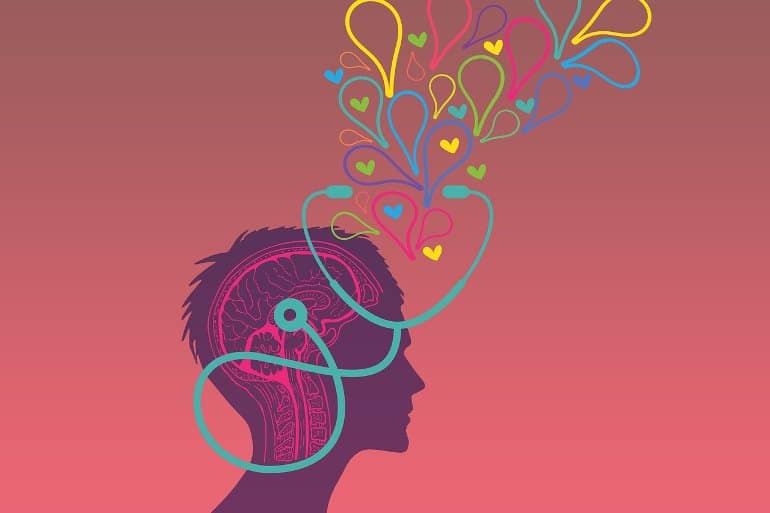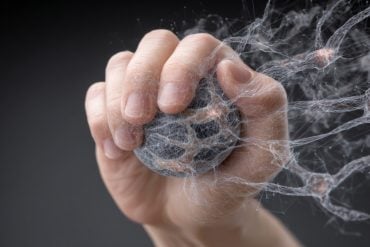Summary: Ketamine reduces pressure within the skull for children with traumatic brain injury, a new study reports.
Source: Vanderbilt University
A common anesthesia drug could be beneficial in reducing pressure inside the skull of children with traumatic brain injuries (TBI), according to a study published in Critical Care Medicine.
Ketamine, a drug that has been used for anesthesia since the 1970s, has traditionally been avoided for patients with TBI due to early studies suggesting that it could raise the pressure inside of the skull, known as intracranial pressure (ICP).
More recent studies have suggested otherwise, said lead author Michael Wolf, MD, assistant professor of Pediatrics and Neurological Surgery and director of Neurocritical Care at Monroe Carell Jr. Children’s Hospital at Vanderbilt.
Wolf and his co-authors set out to reexamine the effects of ketamine on ICP in children admitted to the pediatric intensive care unit (PICU) with severe TBI, analyzing data from 33 patients ages 1 month to 16 years, 22 of whom received ketamine as part of a treatment protocol informed by evidence-based guidelines.
Eighteen ketamine doses were given during ICP crises in 11 patients, and an overall decrease in ICP was observed.
“We found that not only does ketamine not raise ICP, in some cases it may even lower it,” Wolf said.
“Children with severe TBI are at risk of dying or having long-term neurologic impairment, such as difficulty walking and talking. In the crucial days following their initial injury, our focus in the PICU is to minimize ongoing damage to their brains, with a focus on preventing and treating high ICP.”
“Despite decades of research, our treatment options remain limited to a handful of medicines and techniques,” he added. “This study might help open the door to a new use of an old drug that could help us continue to improve our approach to caring for these vulnerable children.”
Wolf said study the results are “exciting, though preliminary” because ketamine was associated with a reduction in ICP during ICP crises. If the findings are reproduced in a larger study, ketamine may warrant consideration as a treatment for intracranial hypertension in children with severe TBI, he said.

“Going forward, we plan to study the effects of ketamine in larger numbers of children with traumatic brain injury, partnering with colleagues at other children’s hospitals to do so,” Wolf said.
“If we are able to improve our understanding of ketamine’s effects in a larger study, we might find that ketamine represents another tool to provide the best possible treatment for children with traumatic brain injury.”
The study results could reverse nearly two decades of thinking related to ketamine and intracranial pressure, according to co-author John C. “Jay” Wellons, III, MD, MSPH, Cal Turner Chair and chief of Pediatric Neurosurgery at Monroe Carell.
“This is a terrific example of what the pediatric neurocritical care effort is capable of,” Wellons said. “Dr. Wolf and his pediatric ICU colleagues not only provide excellent care, but also conduct field-impacting clinical research.
“This study alone represents a near complete reversal in how we think about the relationship between ketamine and intracranial pressure. The results will likely lead to further studies that I believe will change 20 years of past thinking,” he said.
About this neuropharmacology and TBI research news
Author: Press Office
Source: Vanderbilt University
Contact: Press Office – Vanderbilt University
Image: The image is in the public domain
Original Research: Closed access.
“Acute Effects of Ketamine on Intracranial Pressure in Children With Severe Traumatic Brain Injury” by Jennifer C. Laws et al. Critical Care Medicine
Abstract
Acute Effects of Ketamine on Intracranial Pressure in Children With Severe Traumatic Brain Injury
Objectives:
The acute cerebral physiologic effects of ketamine in children have been incompletely described. We assessed the acute effects of ketamine on intracranial pressure (ICP) and cerebral perfusion pressure (CPP) in children with severe traumatic brain injury (TBI).
Design:
In this retrospective observational study, patients received bolus doses of ketamine for sedation or as a treatment for ICP crisis (ICP > 20 mm Hg for > 5 min). Administration times were synchronized with ICP and CPP recordings at 1-minute intervals logged in an automated database within the electronic health record. ICP and CPP were each averaged in epochs following drug administration and compared with baseline values. Age-based CPP thresholds were subtracted from CPP recordings and compared with baseline values. Trends in ICP and CPP over time were assessed using generalized least squares regression.
Setting:
A 30-bed tertiary care children’s hospital PICU.
Patients:
Children with severe TBI who underwent ICP monitoring.
Interventions:
None.
Measurements and Main Results:
We analyzed data from 33 patients, ages 1 month to 16 years, 22 of whom received bolus doses of ketamine, with 127 doses analyzed. Demographics, patient, and injury characteristics were similar between patients who did versus did not receive ketamine boluses. In analysis of the subset of ketamine doses used only for sedation, there was no significant difference in ICP or CPP from baseline. Eighteen ketamine doses were given during ICP crises in 11 patients. ICP decreased following these doses and threshold-subtracted CPP rose.
Conclusions:
In this retrospective, exploratory study, ICP did not increase following ketamine administration. In the setting of a guidelines-based protocol, ketamine was associated with a reduction in ICP during ICP crises. If these findings are reproduced in a larger study, ketamine may warrant consideration as a treatment for intracranial hypertension in children with severe TBI.






